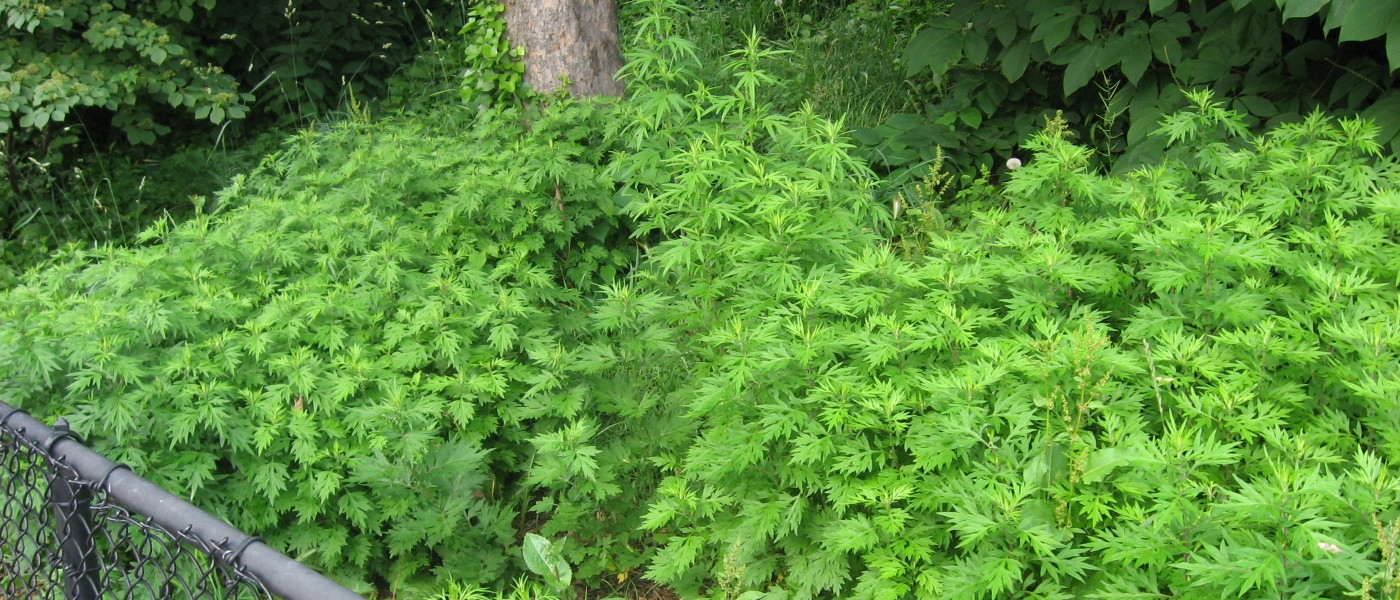Weed of the Month: Mugwort
Leafing out in silvery-green abundance, mugwort (Artemisia vulgaris) appears in vacant lots and at roadsides and park edges around this time of year. This hardy member of the aster family thrives in these disturbed areas and easily withstands attempts to yank it out. Thanks to its extensive system of rhizomes, or underground stems, it’s persistent and will bounce right back even after repeated weeding or mowing. It flowers in late summer, sending its seeds into the wind, but really, it’s those thick rhizomes that allow it to spread vegetatively in dense stands until it takes over.
It’s easy to mistake mugwort’s frilly, lobed leaves for chrysanthemum leaves, but if you pinch one and rub it between your fingers, its bittersweet smell is an easy giveaway. It smells similar to its notorious cousin, wormwood (Artemisia absinthium), an ingredient in absinthe, the bitter, green, psychotropic spirit that was popular with 19th-century artists and writers like Vincent van Gogh, Arthur Rimbaud, and Oscar Wilde. Like many Artemisia species, mugwort is also exceptionally bitter and was once prized as a medicinal herb. (The more bitter the specimen, the more effective it was considered.) Ancient Greeks and others used it as a vermifuge (an agent used to expel worms), an abortant, and a general antiseptic. Many cultures also used the plant to guard against evil spirits.
I would be remiss if I didn’t point out that the large genus Artemisia, which contains over 200 species, was named for noted female botanist and medical scholar Artemisia II of Caria, who lived in what is today Turkey, in the 4th century BCE! So few women are immortalized in the botanical names of plants. This genus also happens to boast one of my favorite herbs, tarragon (Artemisia dracunculus), big sagebrush (Artemisia tridentata), a dominant species of the western United States, as well as many other fragrant Mediterranean shrubs.
A fellow weed enthusiast in the Brownsville neighborhood of Brooklyn has spotted a wonderful world of insect life on a patch of mugwort there—a population of aphids has attracted a fleet of ladybugs and their larvae to feast on the easy prey. In fact, over 300 insect species have been known to frequent Artemisia species, either for the pollen or to prey on other insects inhabiting them. Next time you pass a stand of mugwort, examine the leaves up close—maybe you’ll discover a whole new universe hidden in the weeds!


